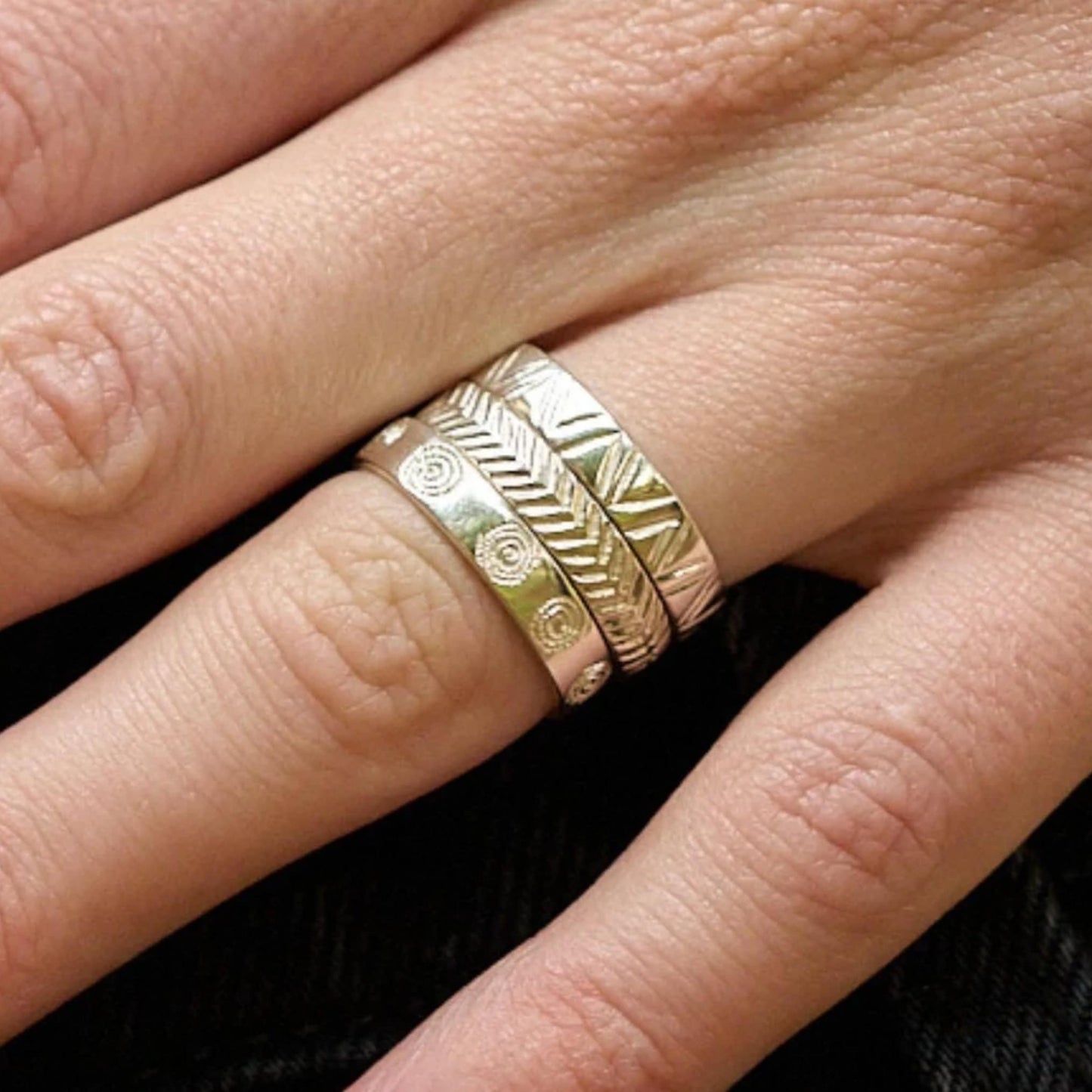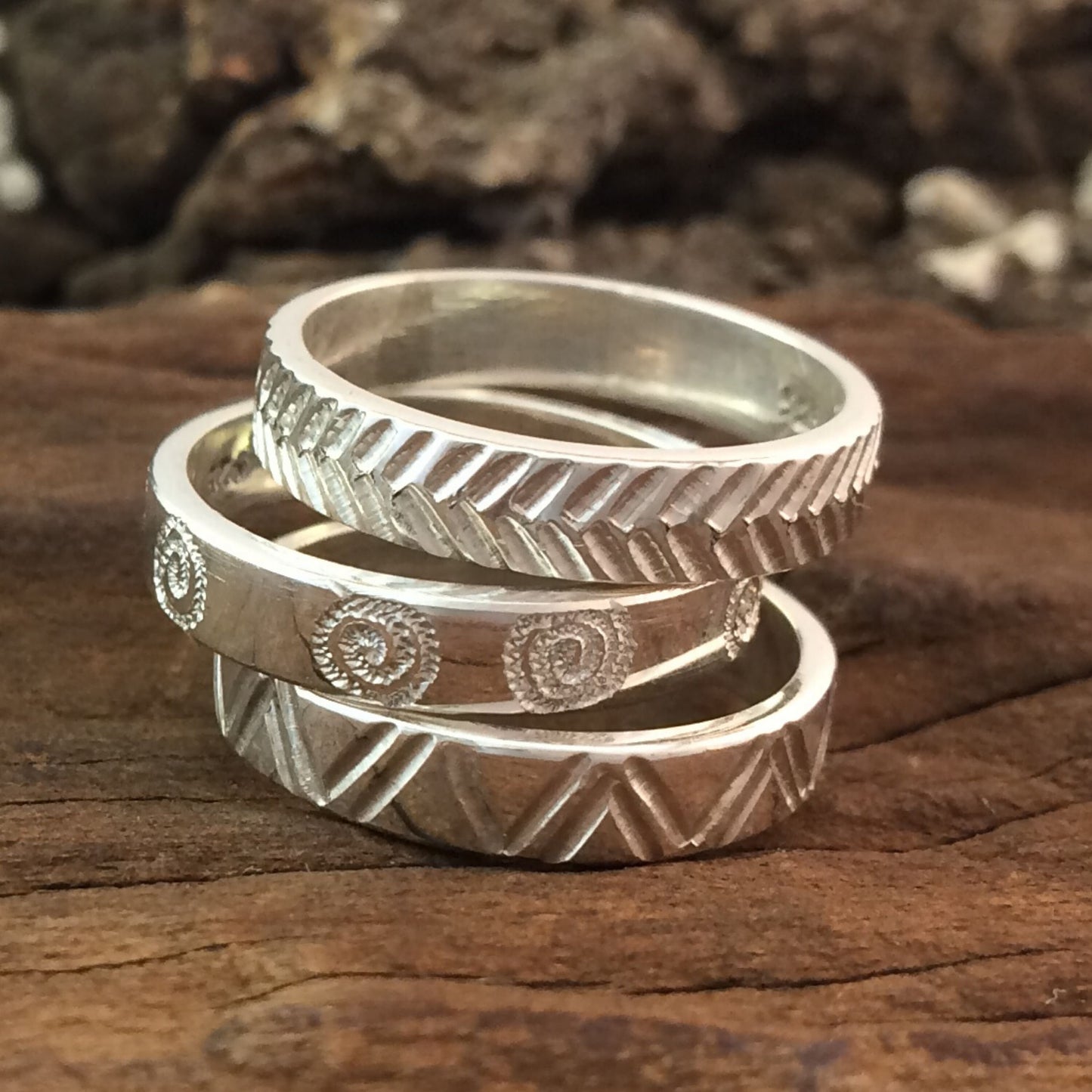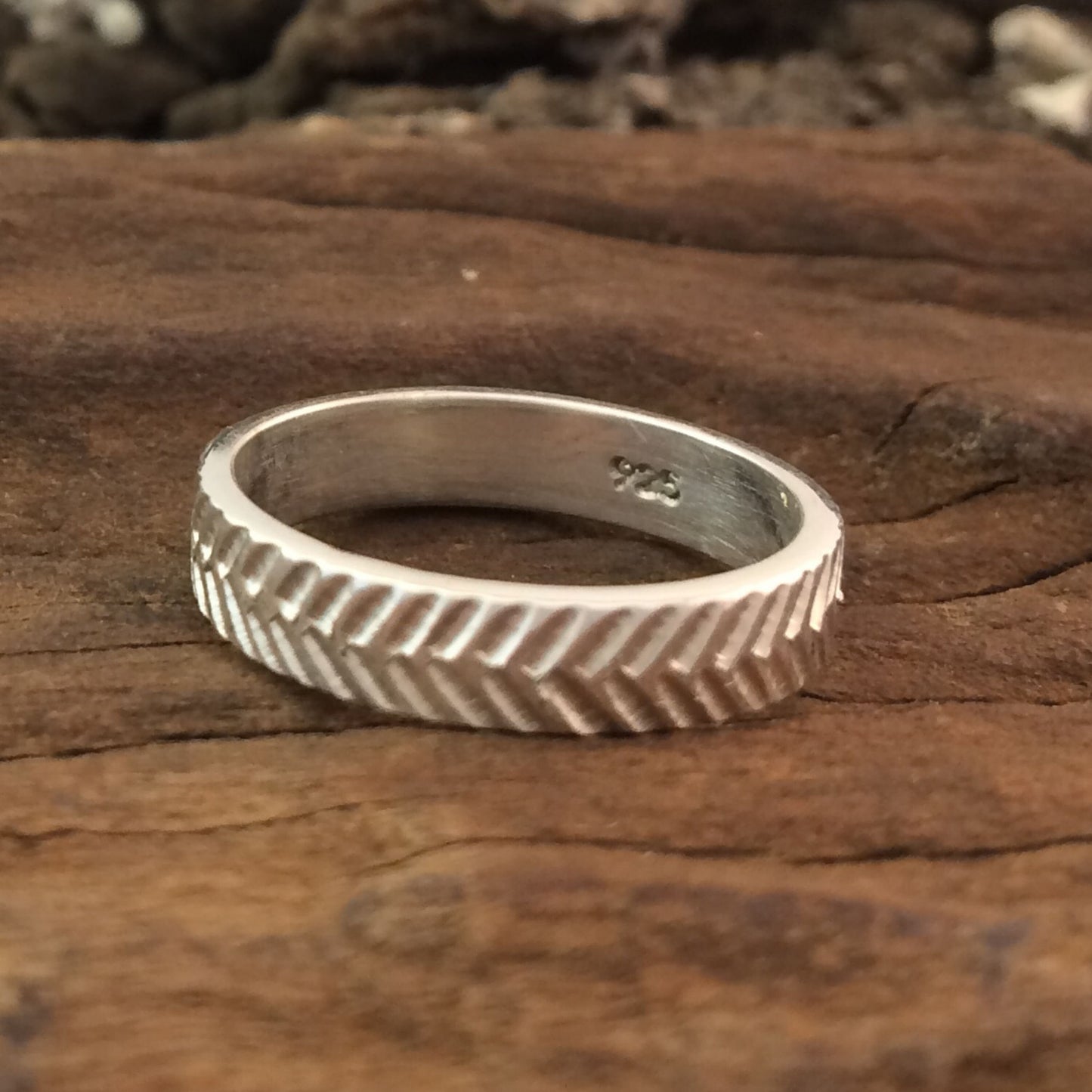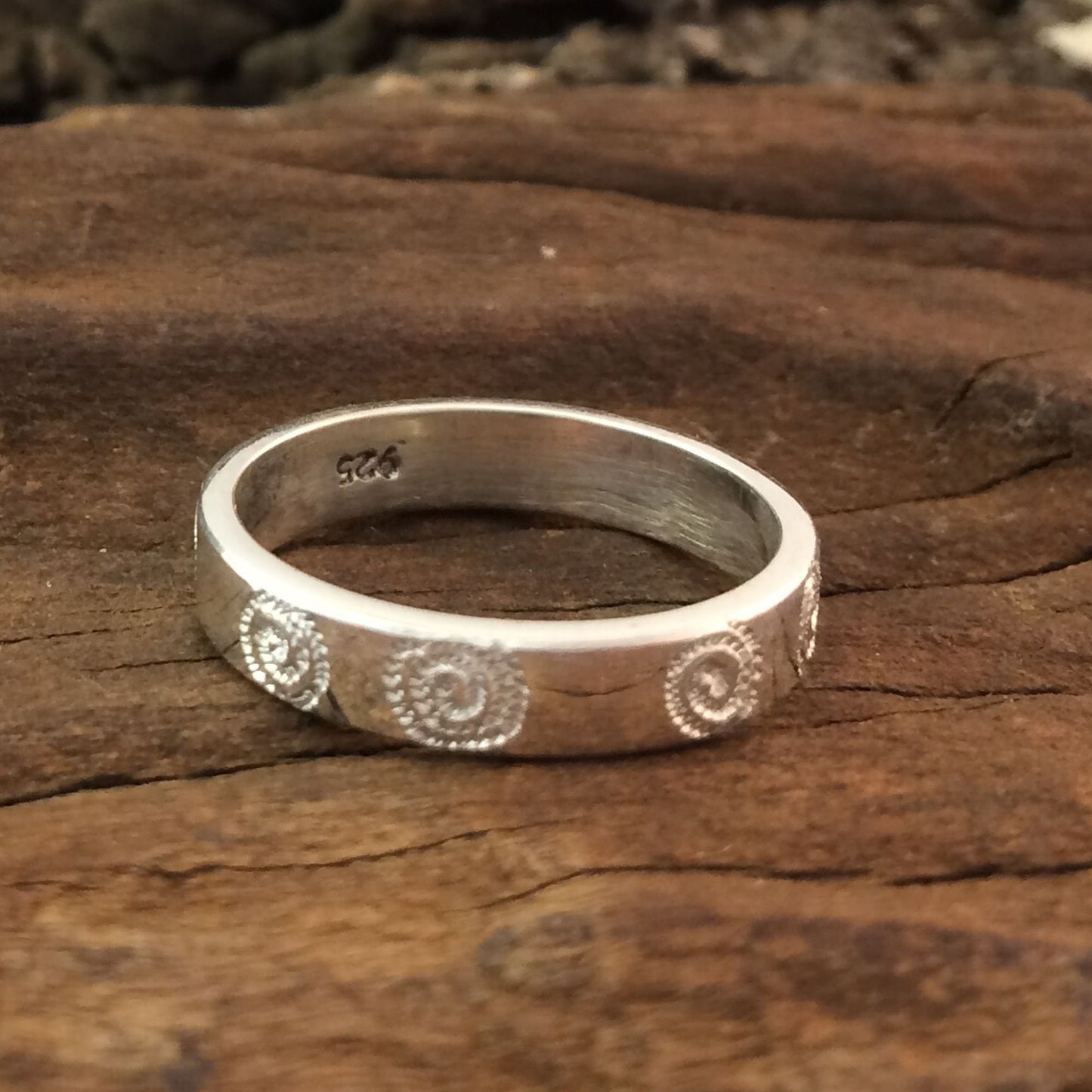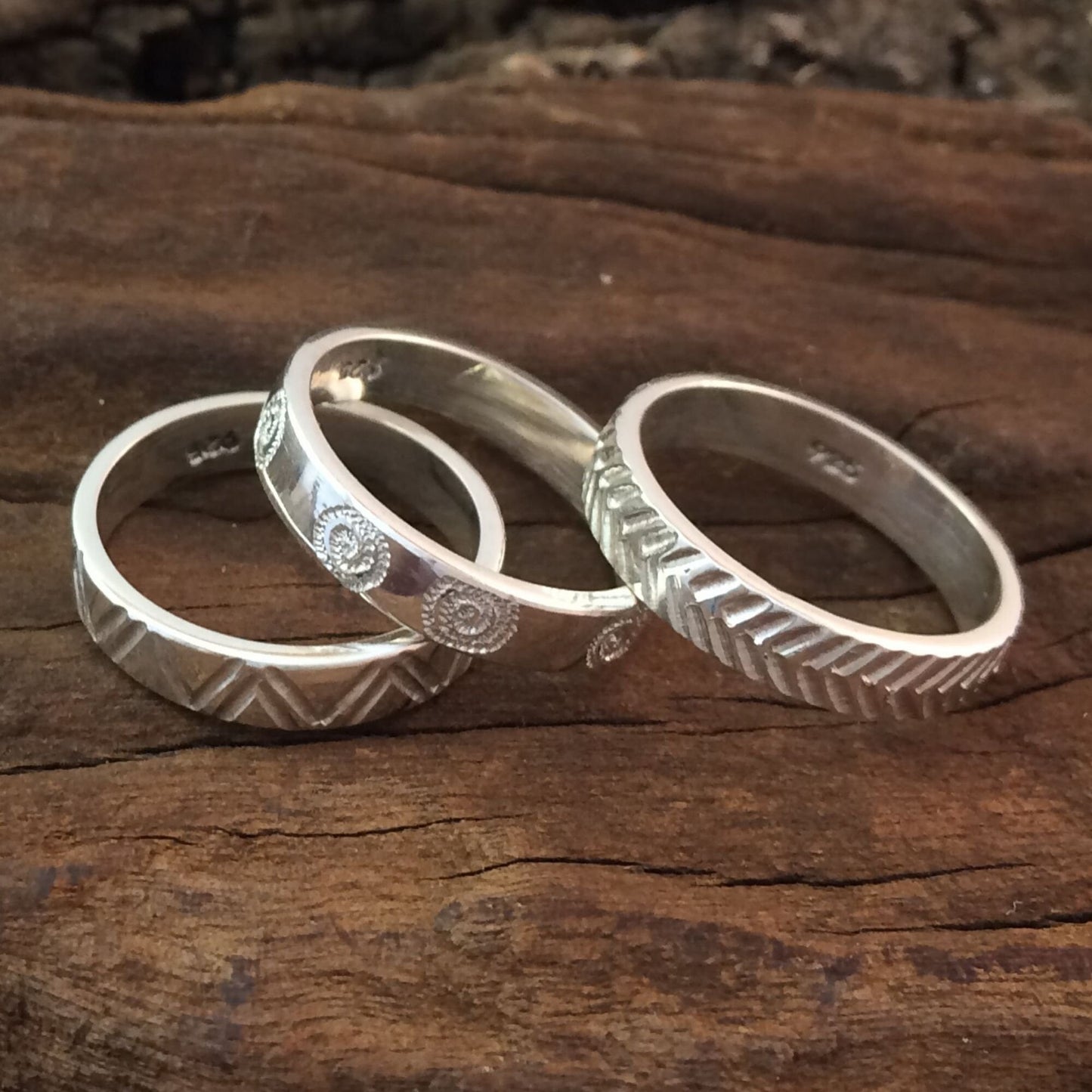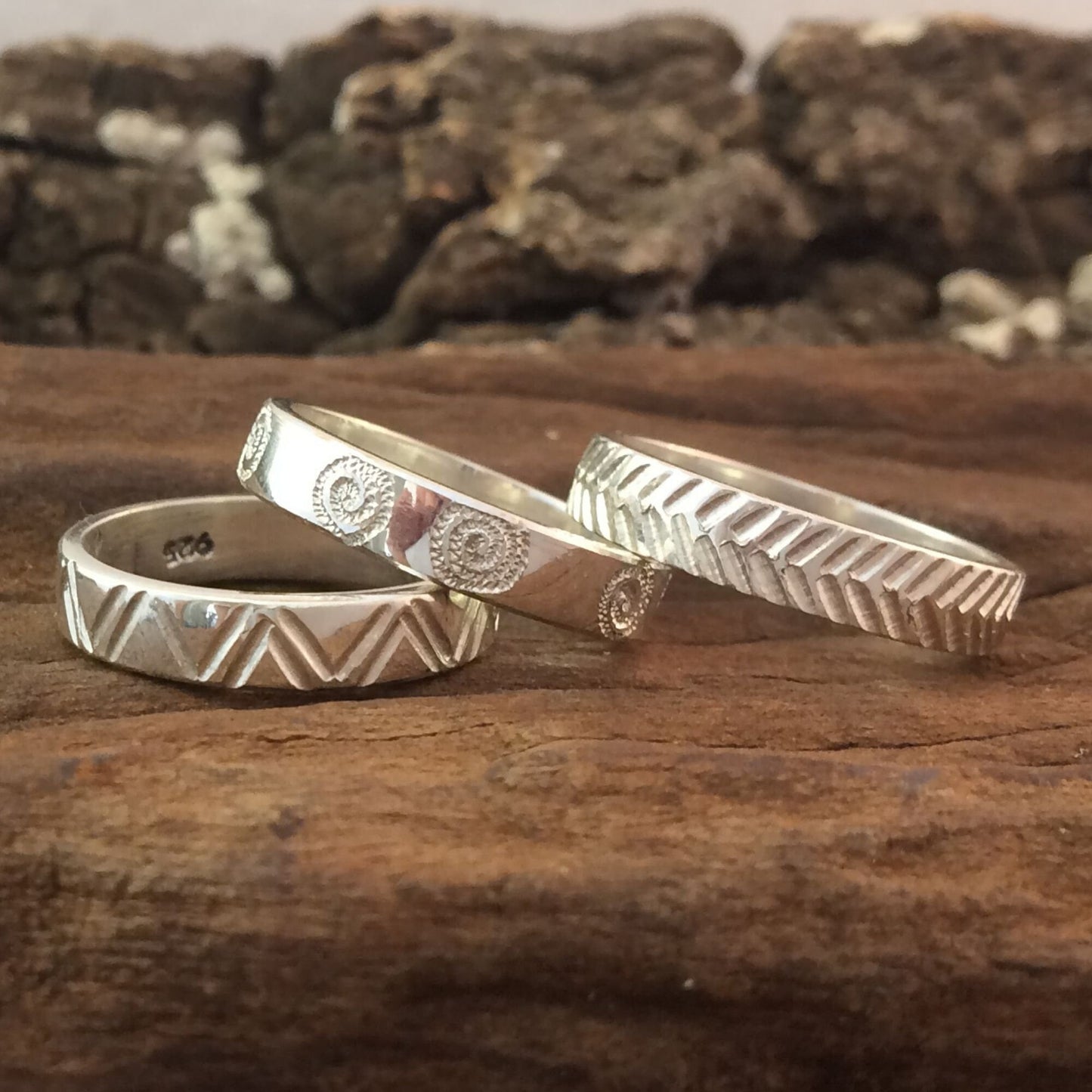1
/
of
7
The Zuri Collection
Sterling Silver Great Zimbabwe Stacking Rings
Sterling Silver Great Zimbabwe Stacking Rings
Regular price
$139.00 USD
Regular price
Sale price
$139.00 USD
Unit price
/
per
Shipping calculated at checkout.
Couldn't load pickup availability
Our silver stacking ring design inspiration comes from the Kingdom of Great Zimbabwe and the ruins that were left behind. The three rings together make for quite a wide ring of approximately 12 mm wide (each individual ring is 4 mm wide). They are of course made in Zimbabwe in our Bulawayo studio.
I have used the Chevron and Herringbone patterns that they used in their stone building as well as the Ndoro, an ancient Zimbabwe artifact. The Ndoro was a status symbol during the height of the Great Zimbabwe Empire.
The ruins that were left behind from the Great Zimbabwe empire are quite impressive with their massive walls. The impressive thing is that every single stone was handcrafted to fit, no mortar was used in constructing these walls. Not only was their building massive in size but they even took the time to do patterns within the stone walls. It's these patterns that we have used on two of the rings.
The Chevron pattern is believed to have represented the queens fertility and the Herringbone pattern representative of the king being the backbone of the society. He
On the third ring, we have used the Ndoro. Ndoro’s were worn by the people of the Kingdom Of Great Zimbabwe on the chest and forehead. The number of Ndoro’s your wife wore, indicated your status and wealth in society.
The story of the Ndoro begins way back during the height of the Kingdom of Great Zimbabwe (near modern-day Masvingo). Sometime between the 14th and 17th Centuries (the Middle Ages to put it into some historical context), the Ndoro was used for trade between them and the Portuguese traders that traded along the East Coast of Africa.
The originally Ndoro was actually a seashell but when the Portuguese traders in the 16th century realized its value they started to make them from porcelain and ceramic and used them to trade in our area. So most Ndoros that you will find from that time in Zimbabwe are in fact man-made.
It’s funny how moving away from your own country makes you miss home and in fact, learn more about your own country once you have left. It took me moving to the States and missing home to learn more about Zimbabwe. Now that I am back home in Zimbabwe I revel in the fact that there is so much inspiration to draw on here in Africa for my designs. Great Zimbabwe and its artifacts are a great inspiration for our work.
We lovingly wrap each ring in hessian and package it in our round sisal baskets. Due to the handmade nature of the baskets and the organic material used - colour and pattern may vary. Our baskets are made by women from Lupane and Matopas who belong to groups that promote fair trade and self-sufficiency.
I have used the Chevron and Herringbone patterns that they used in their stone building as well as the Ndoro, an ancient Zimbabwe artifact. The Ndoro was a status symbol during the height of the Great Zimbabwe Empire.
The ruins that were left behind from the Great Zimbabwe empire are quite impressive with their massive walls. The impressive thing is that every single stone was handcrafted to fit, no mortar was used in constructing these walls. Not only was their building massive in size but they even took the time to do patterns within the stone walls. It's these patterns that we have used on two of the rings.
The Chevron pattern is believed to have represented the queens fertility and the Herringbone pattern representative of the king being the backbone of the society. He
On the third ring, we have used the Ndoro. Ndoro’s were worn by the people of the Kingdom Of Great Zimbabwe on the chest and forehead. The number of Ndoro’s your wife wore, indicated your status and wealth in society.
The story of the Ndoro begins way back during the height of the Kingdom of Great Zimbabwe (near modern-day Masvingo). Sometime between the 14th and 17th Centuries (the Middle Ages to put it into some historical context), the Ndoro was used for trade between them and the Portuguese traders that traded along the East Coast of Africa.
The originally Ndoro was actually a seashell but when the Portuguese traders in the 16th century realized its value they started to make them from porcelain and ceramic and used them to trade in our area. So most Ndoros that you will find from that time in Zimbabwe are in fact man-made.
It’s funny how moving away from your own country makes you miss home and in fact, learn more about your own country once you have left. It took me moving to the States and missing home to learn more about Zimbabwe. Now that I am back home in Zimbabwe I revel in the fact that there is so much inspiration to draw on here in Africa for my designs. Great Zimbabwe and its artifacts are a great inspiration for our work.
We lovingly wrap each ring in hessian and package it in our round sisal baskets. Due to the handmade nature of the baskets and the organic material used - colour and pattern may vary. Our baskets are made by women from Lupane and Matopas who belong to groups that promote fair trade and self-sufficiency.
Share
